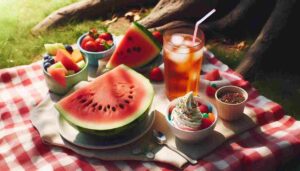
- Balancing Pitta dosha is crucial for maintaining overall health and well-being. Pitta dosha, one of the three primary doshas in Ayurveda, governs metabolism, digestion, and transformation in the body.
- When in balance, it supports a strong digestive system, sharp intellect, and radiant skin. However, when Pitta dosha is out of balance, it can lead to various health issues, including acidity, inflammation, and irritability.
- In this comprehensive guide, we’ll explore how to balance Pitta dosha effectively through diet, lifestyle changes, and herbal remedies.
Table of Contents

What is Pitta Dosha?
Before diving into how to balance Pitta dosha, it’s important to understand what Pitta dosha represents. Pitta is composed of the fire and water elements and is responsible for all processes related to heat and metabolism in the body. A balanced Pitta dosha manifests as a strong appetite, clear mind, and glowing skin. However, when Pitta dosha becomes aggravated, you may experience:
- Acid reflux or hyperacidity
- Skin rashes, acne, or inflammation
- Excessive sweating and body odor
- Anger, frustration, or irritability
- Diarrhea or loose stools
Knowing how to balance Pitta dosha can help you avoid these symptoms and maintain optimal health.
Dietary Guidelines: How to Balance Pitta Dosha with Food
Diet plays a pivotal role in balancing Pitta dosha. Here’s how to balance Pitta dosha through proper dietary choices:

1. Eat Cooling Foods:
- To balance Pitta dosha, focus on cooling foods such as fresh fruits like melons, grapes, and pomegranates.
- Vegetables like cucumbers, leafy greens, and zucchini are excellent for calming Pitta.
- Additionally, dairy products like milk, ghee, and buttermilk help to cool and soothe the body.
2. Avoid Pitta-Aggravating Foods:
Spicy, oily, and sour foods can aggravate Pitta dosha. Limit your intake of hot spices (like chili and black pepper), fried foods, and fermented items (such as pickles and yogurt).
Sour fruits like citrus should also be consumed in moderation.
3. Regular Meal Times:
- Skipping meals or eating irregularly can disturb Pitta balance. To maintain stability, eat three meals a day at consistent times.
- Lunch should be your largest meal since your digestive fire is strongest at midday.
4. Include Sweet, Bitter, and Astringent Tastes:
- Balancing Pitta dosha involves incorporating sweet (like rice, wheat, and dairy), bitter (like bitter gourd and leafy greens), and astringent (like beans and lentils) tastes into your diet.
5. Stay Hydrated with Cooling Drinks:
- Proper hydration is key to balancing Pitta dosha. Drink room-temperature water throughout the day and opt for cooling herbal teas like mint, fennel, and chamomile.
6. Avoid Sea Salt and Consume Rock Salt
Try to Avoid sea Salt it comes with side effcets , rather choose Rock salt or Saindhav Lavana for daily cnsumption. It not only provide more cooler effect than Sea Salt but also Beneficial For so many Health conditions including Skin Condition.
Lifestyle Tips: How to Balance Pitta Dosha Daily
In addition to diet, your daily routine can significantly impact how to balance Pitta dosha. Here are some lifestyle tips:

1. Adopt a Cooling Routine:
- Start your day early, ideally around 3:30-6:00 AM at Brahma Muhurta. Engage in calming activities like gentle yoga, meditation, and pranayama (breath control).
- Focus on cooling breaths like Sheetali and Sheetkari to reduce internal heat.
2. Limit Exposure to Heat:
- Overexposure to heat can aggravate Pitta dosha. Avoid spending too much time in the sun during peak hours, and steer clear of saunas and hot baths.
- Opt for moderate exercise instead of high-intensity workouts.
3. Practice Stress Reduction:
- Stress and anger can disrupt Pitta balance. Incorporate stress-reduction techniques such as mindfulness, meditation, and spending time in nature to keep Pitta dosha in check.
4. Use Cooling Oils for Massage:
- Regular self-massage with cooling oils like coconut or sandalwood can help balance Pitta dosha.
- Apply the oil before bathing to keep your skin cool and hydrated.
5. Prioritize Rest and Relaxation:
- To maintain a balanced Pitta dosha, ensure you get sufficient sleep and incorporate relaxation into your daily routine.
- Avoid overworking and strive for a healthy work-life balance.
Herbal Remedies: How to Balance Pitta Dosha with Ayurveda
Ayurvedic herbs can be powerful allies in balancing Pitta dosha. Here are some effective herbs to consider:
1. Amla (Indian Gooseberry):
Amla is a potent cooling herb that is rich in Vitamin C. It is Tridosha-Hara that means it eleminates all the 3 Doshas ( Vata , Pitta & Kapha ) It helps reduce inflammation, improves digestion, and cools the body, making it ideal for balancing Pitta dosha.
2. Guduchi (Tinospora Cordifolia):
Another Tridosha-hara Guduchi is Known for its detoxifying and rejuvenating properties. Guduchi is excellent for calming Pitta dosha and promoting overall health.
3. Shatavari (Asparagus Racemosus):
Shatavari is cooling and nourishing herb, particularly more beneficial for women. It helps balance both Pitta and Vata doshas.
4. Brahmi (Bacopa Monnieri):
Brahmi is renowned for its calming effects, making it a great choice for reducing stress and cooling Pitta-related mental imbalances. Brahmi Balances Kapha & Pitta Dosha .
Conclusion: How to Balance Pitta Dosha for Optimal Health
Knowing how to balance Pitta dosha is essential for maintaining overall health and well-being. By incorporating the dietary, lifestyle, and herbal recommendations mentioned above, you can effectively manage Pitta dosha and enjoy a more balanced, harmonious life. Remember, Ayurveda emphasizes the importance of balance and moderation, so always listen to your body and adjust your practices accordingly.
For personalized guidance on how to balance Pitta dosha, consider consulting an Ayurvedic practitioner who can provide tailored advice based on your unique constitution.
